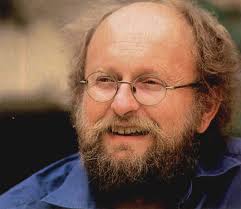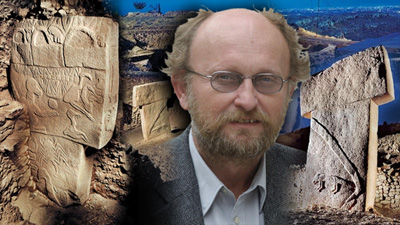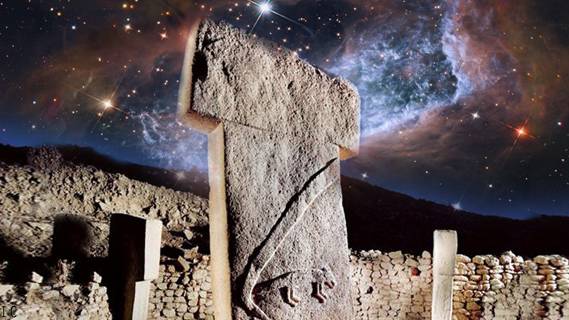Dr. Klaus Schmidt, Head of Göbekli Tepe excavations, Passes Away

It’s with sadness we announce that Dr. Klaus Schmidt has died.
 An archaeology professor from the German Archaeological Institute, Klaus led the excavations in Turkey at Göbekli Tepe from 1996 to 2014, uncovering massive stone enclosures dating between 10,000 and 8000 B.C.
An archaeology professor from the German Archaeological Institute, Klaus led the excavations in Turkey at Göbekli Tepe from 1996 to 2014, uncovering massive stone enclosures dating between 10,000 and 8000 B.C.We were fortunate to speak with Klaus in 2010, and he shared with us his theories and impressions, his thoughts on the excavation work, and on the people who built and worshiped at the ancient temple site.
Göbekli Tepe was originally discovered in the 1960’s but dismissed as an abandoned cemetery. Klaus Schmidt and his team uncovered much of the site, recognizing it as a neolithic sanctuary and a compelling historical treasure.
Klaus Schmidt died on July 20, 2014 of a heart attack.
From Today’s Zaman:
Schmidt had once explained that the real significance of the historic site went unnoticed until his team launched extensive excavations there. “Not only did we stumble upon fragments of large sculptures, but we also realized that the mound [there] is artificial; it was quite obvious that this couldn’t be a natural hill. The whole place was also covered in flint chunks and chips, stone tools and traces of human activity,” Schmidt had said.
Göbekli Tepe is approximately 300 meters wide and 15 meters high. The tall archeological mound consisting of the accumulated remains of one or more ancient settlements is well known for its T-shaped stone pillars, which formed 20 circles, according to geographical surveys. Though the exact function is uncertain, they are hypothesized to be early Neolithic sanctuaries.
Klaus believed that the scale of work at the dig to be comparable to other important archeological sites like Troy or Pergamon.
“It’s hard to give a detailed schedule on how long further excavation will take,” he had pointed out, “There’s work for more than one generation of archaeologists at the place, without question.”
We’re grateful for the time and dedication Klaus put into his work. He will be missed.
We make archives available for everyone to explore Klaus’ vital research into Göbekli Tepe, the the Neolithic age, and the origins human civilization.
---
Klaus Schmidt - Göbekli Tepe: The World’s Oldest Temple?
June 24, 2010
 Klaus Schmidt is a German archeologist Klaus Schmidt, from the German Archaeological Institute, who has been working as the head archeologist at Göbekli Tepe, a temple site located in southeastern Turkey close to the boarder to Syria. Klaus has been excavating there since 1994. In this short interview, he talks about his excavation work, impressions, theories and about the people who built it and worshiped at this ancient temple site. The temple is believed to have been erected in the 10th millennium BC (about 11,500 years ago). It is believed to be the oldest human-made place of worship. It has even been called the Garden of Eden. Only about 3-5% of the site has been excavated so far and has unveiled several stone circle rooms, only one of which has been dug down to the floor. As many as 20 such structures are thought to exist under the ground at the site. These have been detected by radar scans. These stone circles have large T-shaped pillars, some of the heaviest stones weight up to 50 tons. The monoliths are decorated with carved reliefs of animals, abstract pictograms, sacred symbols and similarities to Neolithic cave paintings. The carefully carved figurative reliefs depict lions, bulls, boars, foxes, gazelles, donkeys, snakes and other reptiles, insects, arachnids, and birds, particularly vultures and water fowl. Göbekli Tepe means "hill with a potbelly" although there already exists other interpretations of the name, connected to the word "Zep Tepi" or "The First Time" a period in, ancient Egyptian beliefs, a mythological golden age when the gods lived amongst humanity together with half-divine offspring of gods and humans. Is Göbekli Tepe the Garden of Eden?
Klaus Schmidt is a German archeologist Klaus Schmidt, from the German Archaeological Institute, who has been working as the head archeologist at Göbekli Tepe, a temple site located in southeastern Turkey close to the boarder to Syria. Klaus has been excavating there since 1994. In this short interview, he talks about his excavation work, impressions, theories and about the people who built it and worshiped at this ancient temple site. The temple is believed to have been erected in the 10th millennium BC (about 11,500 years ago). It is believed to be the oldest human-made place of worship. It has even been called the Garden of Eden. Only about 3-5% of the site has been excavated so far and has unveiled several stone circle rooms, only one of which has been dug down to the floor. As many as 20 such structures are thought to exist under the ground at the site. These have been detected by radar scans. These stone circles have large T-shaped pillars, some of the heaviest stones weight up to 50 tons. The monoliths are decorated with carved reliefs of animals, abstract pictograms, sacred symbols and similarities to Neolithic cave paintings. The carefully carved figurative reliefs depict lions, bulls, boars, foxes, gazelles, donkeys, snakes and other reptiles, insects, arachnids, and birds, particularly vultures and water fowl. Göbekli Tepe means "hill with a potbelly" although there already exists other interpretations of the name, connected to the word "Zep Tepi" or "The First Time" a period in, ancient Egyptian beliefs, a mythological golden age when the gods lived amongst humanity together with half-divine offspring of gods and humans. Is Göbekli Tepe the Garden of Eden?






















